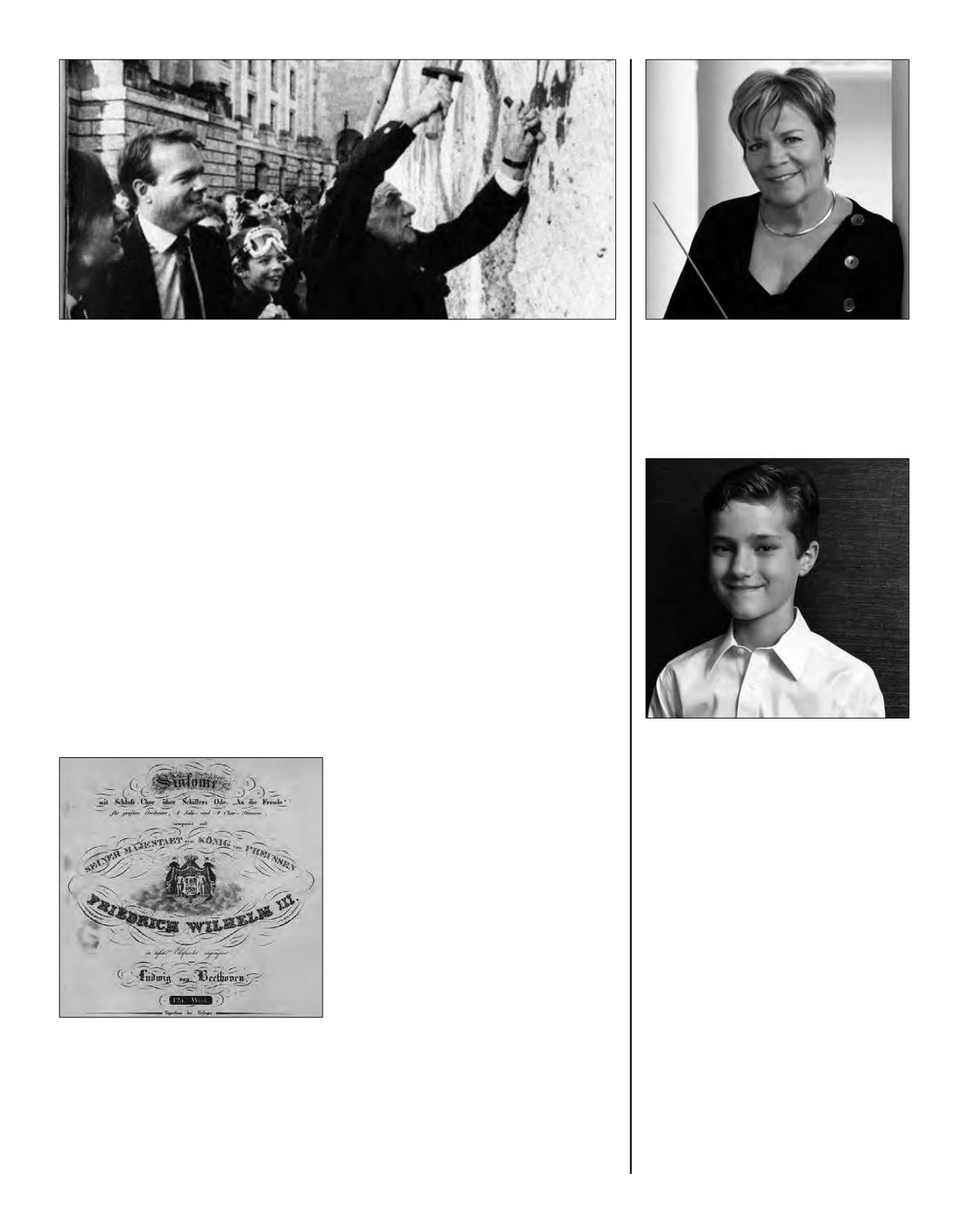

MARIN ALSOP,
conductor
Marin Alsop’s biography appears on page 107.
WYATT PARR,
boy soprano
A Chicago native, Wyatt Parr has been singing
with Chicago Children’s Choir since September
2016, and currently sings in the Lincoln Park/
DePaul Neighborhood Choir. In June 2017, he
sang the boy soprano solo in Bernstein’s
Chich-
ester
Psalms
with CCC at its annual Paint the
Town Red event at Millennium Park. Parr has
also performed with the Lyric Opera of Chicago
in its productions of Bizet’s
Carmen
and Pucci-
ni’s
Turandot
as a member of the children’s cho-
rus, and he will return to the company this fall
in the children’s chorus for Puccini’s
La bohème
.
(
See page 115 for more information about CCC.
)
performing medium (solo and choral forces in
addition to the typical orchestral “families”) and
an enduring text.
In the
Allegro, ma non troppo, un poco maesto-
so
, the robust triadic first theme slowly emerges
from a sparse, hushed opening. A quiet compos-
ite of lyrical motives, serving as a second theme,
does not completely still the turbulence boiling
beneath the surface. Beethoven manipulates
thematic fragments in an extensive develop-
ment. The recapitulation begins in major before
reverting to minor in preparation for a massive
coda.
The second movement combines scherzo and
sonata ideals. A fleet, triple-meter sonata form,
with repeated exposition, functions as the
scher-
zo
. Turning to cut time, Beethoven introduces a
quieter
trio
before resuming the
scherzo
music.
The
Adagio molto e cantabile
consists of inter-
locking sets of variations, such as Beethoven
might have learned from Haydn.
A chaotic dissonance inaugurates the finale.
Basses and cellos anticipate the solo bass voice
recitative, while the orchestra reminisces on
themes from earlier movements. Complete
statements of the “Ode to Joy” melody appear in
the low strings then full ensemble, but without
text it remains an empty, yet beautiful tune.
Chaos strikes with greater force in a tone clus-
ter containing every member of the D-minor
scale. The bass solo rejects all music heard to
this point, implores the gathered company (“O
Friends, not these sounds! Instead, let us make
sweeter and more joyous music!”), then begins
the famous “Ode,” which the chorus and other
soloists join. This melody, varied in each repeti-
tion, alternates like a refrain between new vocal
themes. Beethoven concludes his exhilarating
hymn with a quicksilver orchestral coda.
The interpretive adaptability of Schiller’s text has
thrust this symphony into the service of politics
and nationalism. One popular notion, that the
poet intended an ode to
Freiheit
(freedom) but
changed it to
Freude
(joy), circulated widely
during the 19th century. As a result, Beethoven’s
setting achieved almost universal significance
during this age of revolution and political up-
heaval. Interestingly, this viewpoint turned
against the composer’s own culture during
World War I. The Frenchman Camille Mauclair
was one of many who believed that “the ‘Ode to
Joy’ is the unique hymn of the Allies, the credo
of all our just hopes, and it would be necessary
to forbid criminal Germany ever to play a single
bar of it.” Two decades later, the Nazis enlisted
the Ninth Symphony for their own propaganda
purposes. One of the great cultural showcases—
the 1938 Düsseldorf Reichsmusiktage—featured
Beethoven’s music. Adolf Hitler requested a per-
formance this symphony for his 1942 birthday
celebrations.
After the fall of the BerlinWall, a once-torn Ger-
man nation celebrated its reunification to these
strains. Leonard Bernstein assembled an orches-
tra and chorus for two special Christmas-time
concerts on both sides of the Brandenburg Gate.
These 220 musicians from the East and West
performed on December 23 in West Berlin’s
Philharmonie concert hall and then on Christ-
mas morning in East Berlin’s Schauspielhaus
theater. Caught in the spirit of the event, Ber-
nstein substituted the word
Freiheit
for
Freude
.
–Program notes © 2018 Todd E. Sullivan
Leonard Bernstein hammering the Berlin Wall
Title page of Beethoven’s Symphony No. 9
RAVINIA MAGAZINE | JULY 9 – JULY 15, 2018
112









